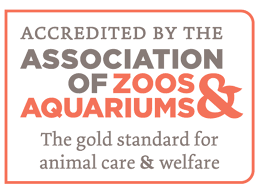By Ellery Keene

On February 14, the Toledo Zoo welcomed a new baby elephant.
The 280 pound African Elephant joined the exhibit on the 17th of February with mom Renee. The father of the calf, Titan, lives at the Sedgwick County Zoo in Wichita, Kansas. The baby, Kirk, was born via artificial insemination.

This new addition to the Toledo Zoo has raised the question: Are Zoos Sanctuaries or Prisons for Newborn Wildlife?
Andrew Domzalski, a professor at Madonna University in the Animal Studies Program and the Humanities Director, says that Elephants are an example of an animal that should not be bred in captivity due to their habitats not being able to be successfully provided by humans and the fact that they do very poorly in captivity.
“It [breeding] should be allowed only for well-defined conservation purposes and only with species suitable for captivity or for successful releases,” said Domzalski. “More preferably, assisting in raising the young should be used, e.g the California Condor Story.”
In a Toledo Area Parents article, Michael Frushour, the general curator of endotherms at the Toledo Zoo said “It takes a special team of experts to perform an elephant AI (artificial insemination), and we prioritized working with the best professionals within the United States and from around the world to make sure that happened.”

Currently, the African Elephant is listed as critically endangered due to illegal wildlife trade, habitat loss and fragmentation, human-elephant conflict.
“Benefits may include a greater number of successfully reared young, although that depends on a species, and maintaining genetic diversity, if possible,” said Domzalski. “Drawbacks include the fact that some species simply do not breed in captivity. There are significant challenges with matching available animals and there are perils in introducing animals bred in captivity to the wild.“


The Nonhuman Rights Project, an organization that works for animal rights through litigation and has a Free To Be Elephants Campaign currently on going, has recently sued nine zoos using the zoo’s elephants and chimpanzees as the plaintiffs. The most recent being on June 29, 2023 against Cheyenne Mountain Zoo. “Judge Eric Bentley dismissed the case against the Cheyenne Mountain Zoo because the elephants being of nonhuman species did not meet Colorado’s habeas corpus statutes and therefore are not able to bring forward a habeas corpus petition to the court,” according to KOAA News 5.
“Balancing conservation, education, and entertainment while considering animal welfare ethics is a perennial challenge for zoos. Research shows that the majority of public comes to zoos for entertainment, and this is how zoos get their revenue,” said Domzalski. “Education plays a marginal role for the general public. Having said that, ‘the entertainment part’ can be achieved without abusive practices such as animal shows or rides that were dominant in the past and are still quite common. It can be simply observation of animals in animal-friendly habitats, which allow animals to hide from the public if they wish so. Focused educational activities can be quite successful and achieved without handling animals or otherwise interfering with them,” Domzalski continued. “Finally, conservation, which is an important part of AZA-accredited zoos’ mission can be conducted according to compassionate conservation, a relatively new paradigm that takes into account the welfare of individual animals along with the survival of a species.”
Domzalski shared that having conservationist justification is very important when breeding animals. “Zoos differ dramatically in their missions and practices. Those that are not accredited by AZA are usually small operations that tend to put profit above animal needs and should not be allowed to operate,” said Domzalski. “AZA-accredited zoos represent a wide range of approaches and attitudes. I believe it is a continuum where on one end we have institutions such as the Detroit Zoo, which is truly dedicated to animal well-being, as evidenced, among other actions, by sending the elephants to a sanctuary, taking in rescued racehorses, and advocating against wolf hunting,” Domzalski continued. “On the other end, there are zoos and aquaria that heavily rely on animal shows and rides, and on breeding baby animals without conservationist justification.”

Domzalski also shared how important it is for zoos to address concerns about the psychological well-being and behavioral needs of animals in captivity. “Zoos have now, at their disposal, a growing array of strategies aiming at creating and maintaining conditions for the psychological well-being of the animals in their care. They should not only implement enrichment and habitat modifications proven to work elsewhere, but also conduct their own research so they can focus on addressing specific needs of the individual animals as well as to contribute to general knowledge in the field. Funds must be set aside for this purpose.”
From accounts of zoo goers, heard from in the interview below, the Toledo Zoo seems to be doing good for the elephants in their care and for the conservation of the species. All zoos, however, need to be kept a close eye on.
247 BC First Animal Sanctuary- Mihintale, situated 13 km east of the ruins of the great city, Anuradhapura, Sri Lanka, was declared as wildlife sanctuary in 247 BC by king Devanampiya Tissa.
1500 BC First Zoo- The first zoo was opened in 1500 BC by Emperor Wen Wang of China. He collected animals from all over Africa to show his wealth and power.
1874 First Zoo in America- Philadelphia Zoo, America’s first zoo, is renowned for innovation in animal care and unwavering commitment to wildlife.
2022 Court rules that Happy the elephant is not a human. The Bronx Zoo argued Happy is neither illegally imprisoned nor a person, but a well-cared-for elephant “respected as the magnificent creature she is.”
2023 Free To Be Elephants Campaign Starts- “Free to Be Elephants is an education and grassroots campaign created by the Nonhuman Rights Project–the only organization in the US dedicated solely to securing legal rights for nonhuman animals. Broadly speaking, this campaign aims to promote understanding of and compassion for elephants as a basis for ending their captivity in US zoos.”- Nonhuman Rights Project
June 29, 2023 Cheyenne Mountain Zoo v Nonhuman Rights Project- The most recent case brought on a zoo by The Nonhuman Rights project.
February 17, 2024 Toledo Zoo Welcomes a New Baby Elephant- The male calf, Kirk, was born via an artificial insemination process with the father chosen from Sedgwick County Zoo in Wichita, Kansas.
2 Hippo Way, Toledo, OH, United States: Toledo Zoo, 36600 Schoolcraft Rd, Livonia, Mi, United States: Madonna University, 5555 W Zoo Blvd, Wichita, KS, United States: Where Toledo Zoo’s baby elephants father, Titan, lives. 4250 Cheyenne Mountain Zoo Rd, Colorado Springs, CO, United States: The zoo being sued by The Nonhuman Rights Organization most recently. 27 E Main St, Hohenwald, TN, United States: The Elephant Sanctuary in Tennessee — Elephant Discovery Center, 501 Front St, Norfolk, VA, United States: PETA Headquarters

Leave a comment